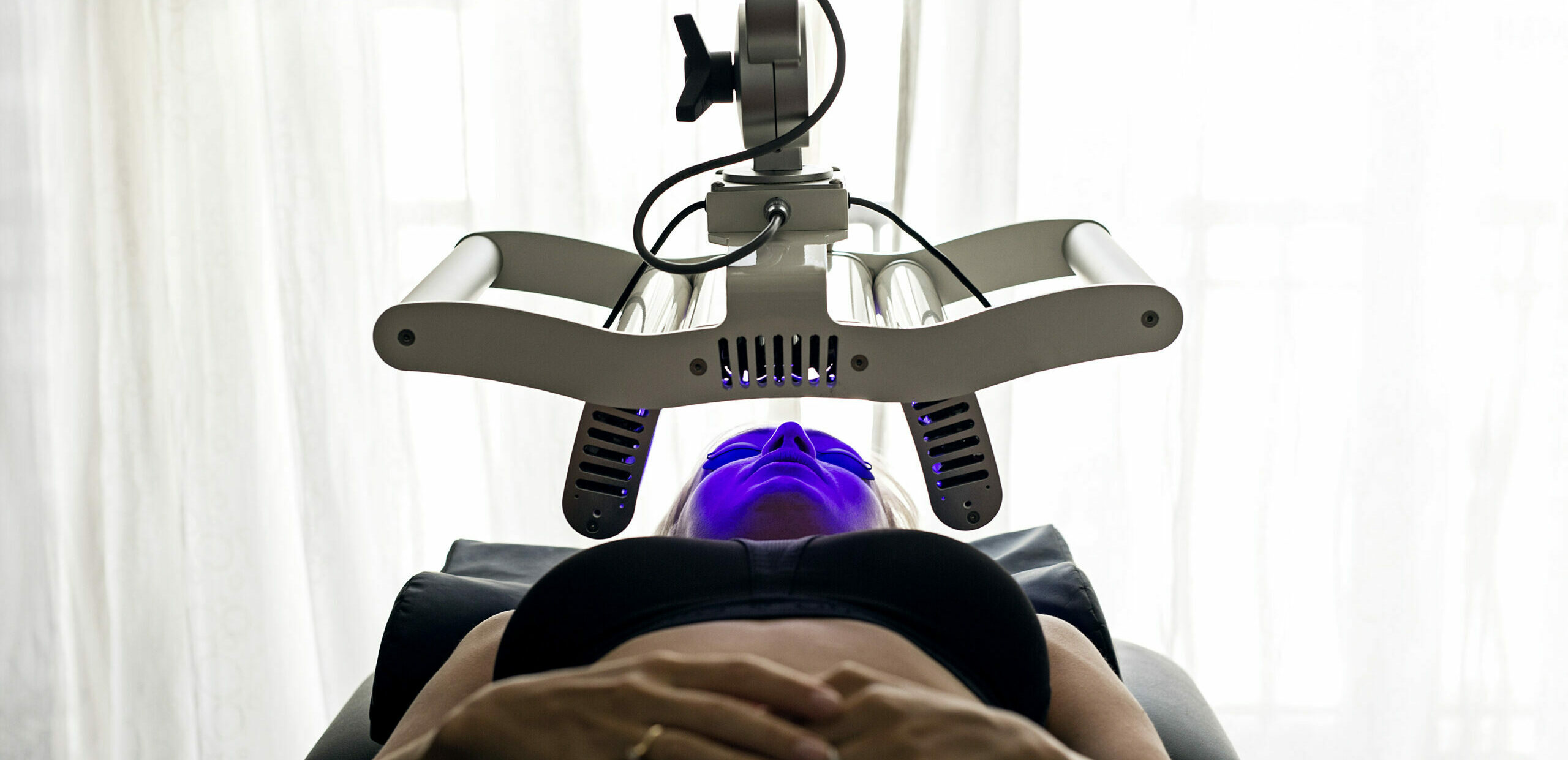

Laser therapy supplemented with red and blue LED
Many practitioners are aware that laser therapy accelerates the natural healing process, and many of them also know that light therapy has been used for various healing purposes for many years.
On certain laser models, PowerMedic Lasers combine different types of light to give practitioners new treatment options.
Laser light has specific characteristics, it is monochromatic (only one wavelength) and coherent (emitted in coordinated light waves for maximum transmission of energy).
The PowerLaser and the GigaLaser both emit laser light at 808nm, the wavelength that best penetrates the tissue in the body. The laser light penetrates into the muscles, deep underlying tendons, and bones, and delivers energy to the cells that need extra fuel for the natural healing process.
Besides laser diodes, the newest version of the GigaLaser includes red and blue light diodes (LEDs), which emit light at different wavelengths than the laser diodes.
The combination of 808nm laser and LED, which has different capabilities, lets you target certain surface conditions more specifically.
For instance, the red LEDs emit light at 660nm, with lower effect which results in less penetration. Instead, the red light stimulates the microcirculation in the surface of the skin. This provides better treatment of conditions like:
- Wounds
- Diabetes wounds
- Burn wounds
- Rosacea
- Scars
- Fissures
- Eczema
- Shingles
The blue LEDs emit light at 405nm, which is known for its ability to kill bacteria. When combined with 808nm laser, this provides better treatment of bacterial skin conditions like:
- Acne
- Impetigo
- Inflammation of the hair follicles
- Erysipelas
- Etc.
Laser combined with both red and blue LED (photodynamic therapy) is beneficial for the treatment of:
- Acne
- Psoriasis
- Actinic keratosis (rough, scaly patches on the skin, caused by years of exposure to the sun)
- Etc.
PowerMedic Lasers with red and blue LED
Supplementing with red and blue LED is not necessary for success, but it does increase the odds of a more effective and targeted treatment of certain types of surface conditions.
PowerMedic Lasers currently offers four different lasers that combine the capabilities of laser and LED:
- GigaLaser: includes 36 laser diodes, as well as red and blue LEDs
- PowerLaser Basic900: 3 x 200mW, as well as 4 red LEDs
- PowerLaser Basic920: 3 x 200mW, as well as 4 blue LEDs
- PowerLaser Basic1600: a more powerful version of the Basic900, with 3 x 400mW laser diodes, as well as 4 red LEDs
Several studies have documented the effects of treatment with red and blue LED. For more information, please see the sources listed below.
Sources for scientific literature on treatment with red and blue LED:
Red LED, 660nm:
http://www.ncbi.nlm.nih.gov/pubmed/19587693
http://www.ncbi.nlm.nih.gov/pubmed/22814898
http://www.ncbi.nlm.nih.gov/pubmed/24301435
http://www.ncbi.nlm.nih.gov/pubmed/18248161
http://www.ncbi.nlm.nih.gov/pubmed/9138262
http://www.ncbi.nlm.nih.gov/pubmed/16262576
http://www.ncbi.nlm.nih.gov/pubmed/22207449
http://www.ncbi.nlm.nih.gov/pubmed/22923269
Blue LED, 405nm:
http://www.ncbi.nlm.nih.gov/pubmed/23621894
http://www.ncbi.nlm.nih.gov/pubmed/23471732
http://www.ncbi.nlm.nih.gov/pubmed/22962531
http://www.ncbi.nlm.nih.gov/pubmed/22946878
http://www.ncbi.nlm.nih.gov/pubmed/22894815
http://www.ncbi.nlm.nih.gov/pmc/articles/PMC3438385/
http://www.ncbi.nlm.nih.gov/pubmed/22803813
http://www.ncbi.nlm.nih.gov/pubmed/22566760